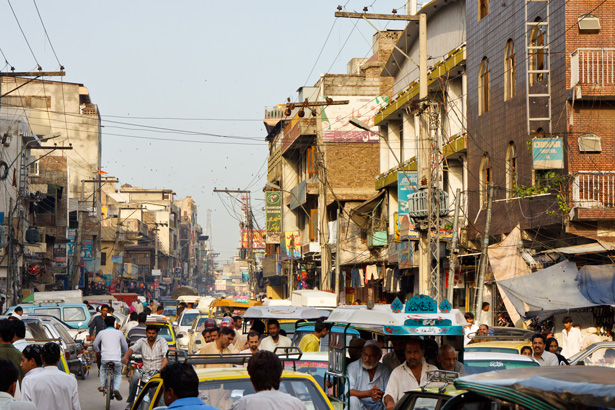-
A Dialogue on Pakistan’s Galloping Urbanization
November 4, 2013 By Michael Kugelman
Pakistan, long a nation defined by its large rural populations and dominant agricultural industries, is undergoing a dramatic urban shift.
According to UN Population Division estimates, the country is urbanizing at a three percent annual rate – the fastest pace in South Asia. In barely 10 years, nearly 50 percent of Pakistan’s 180 million people will live in cities (a third do today). Pakistani government projections using density-based rather than administrative definitions of urbanization suggest that Pakistan’s urban population has already reached 50 percent.
Megacities are partly responsible for this growth. By 2025, according to UN data, Lahore’s population is expected to rise from 7 to 10 million. Karachi’s population – which grew by 80 percent between 2000 and 2010, the largest such increase of any city in the world – will rise from 13 to 19 million. But perhaps most striking of all, the number of Pakistani cities with populations between half a million and a million will be 12. Today, this figure is two.
As I’ve written previously, this urbanization – fueled by a combination of rural insecurity; economic necessity; and natural population growth – poses numerous challenges in a country already struggling with rampant militancy, economic stress, vast poverty, and natural resource stress.
For instance, how will the country provide food, water, housing, health care, and other basic services to new arrivals in already-teeming cities? How will Pakistan’s municipal officials – already at capacity and financially constrained – develop sufficient infrastructure and public transportation to accommodate growing their constituents? And how can a weak labor economy hire so many new urban workers?
These questions and others will be addressed at this Wednesday’s Wilson Center conference, “Pakistan’s Galloping Urbanization.” Organized by the Asia Program with co-sponsorship from the Environmental Change and Security Program and Comparative Urban Studies Project, the event will not only highlight Pakistan’s urbanization challenges, but also propose realistic and actionable policy solutions – and particularly those that go beyond simple calls for more public funding.
Admittedly, some may argue that given Pakistan’s many more immediate problems, now isn’t the right time to address a demographic transition still in its early stages. Still, consider the possible cost of neglecting the issue: Overcrowded cities overwhelmed by homeless and unemployed citizens, ravaged by natural resource scarcity, and struggling to contain tense and simmering populations.
So it’s certainly not too early to address Pakistan’s urban transition and consider how best to ensure that it is a peaceful and successful one. Wednesday’s conference aims to make a modest contribution in this direction.
Michael Kugelman is the Wilson Center’s senior program associate for South Asia. Follow him on Twitter @michaelkugelman.
Sources: Government of Pakistan, Insider Monkey, Norwegian Peacebuilding Resource Center, UN Population Division.
Photo Credit: Raja Bazaar, Rawalpindi, courtesy of Patrick Poendl/Shutterstock.
 A Publication of the Stimson Center.
A Publication of the Stimson Center.



